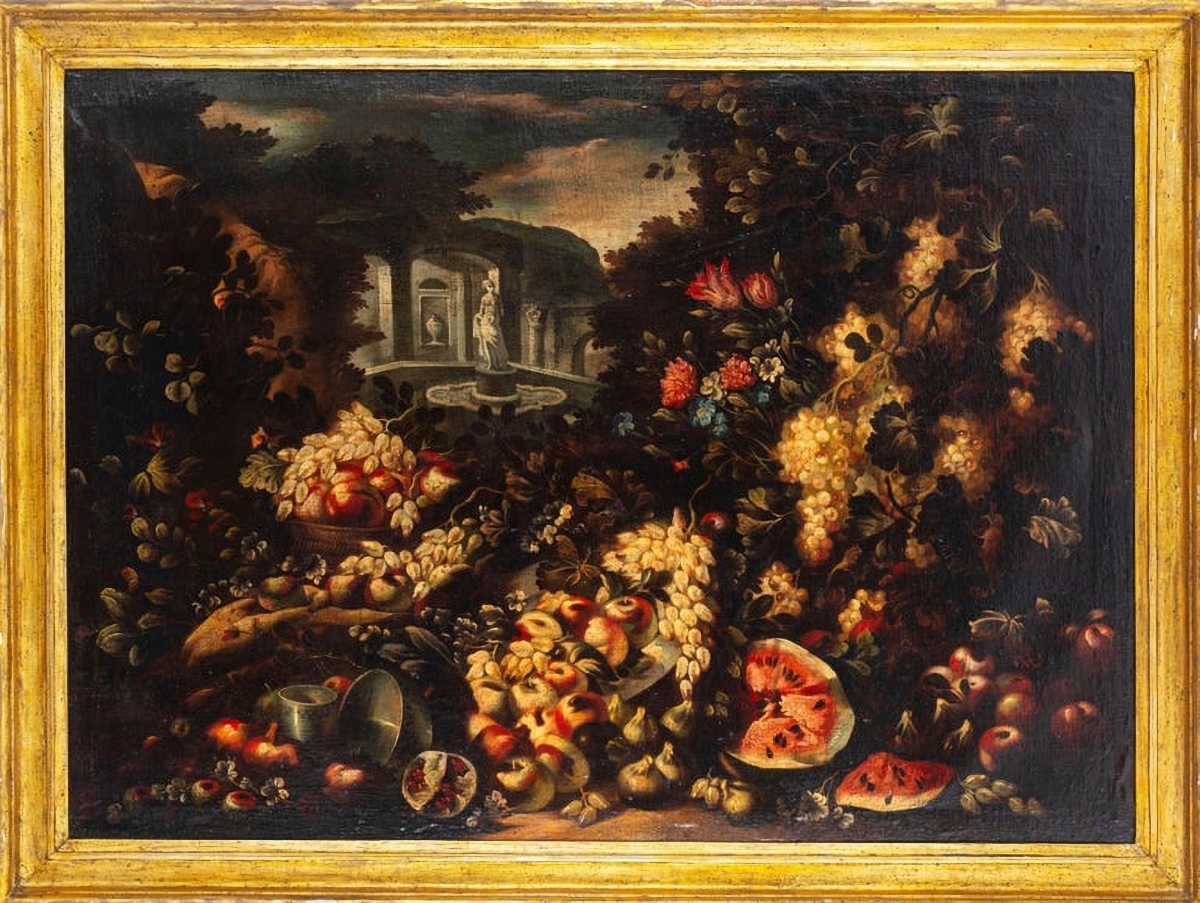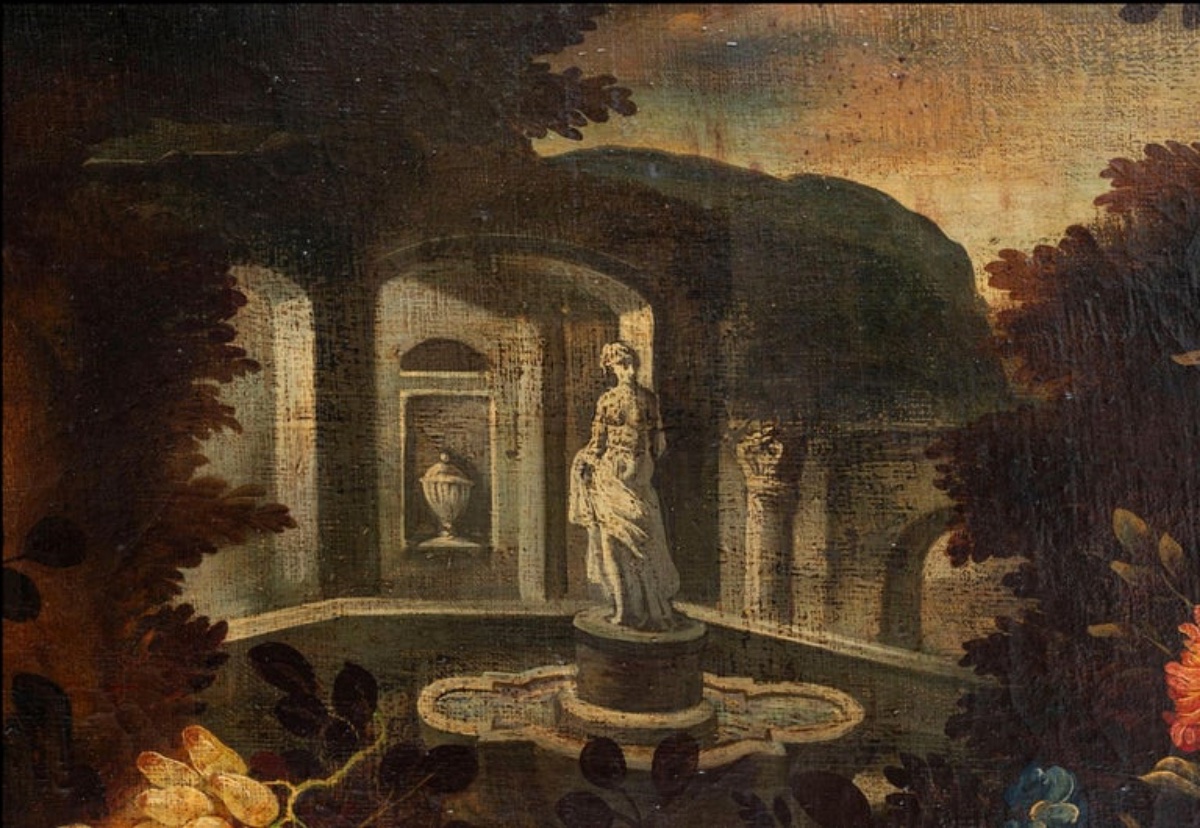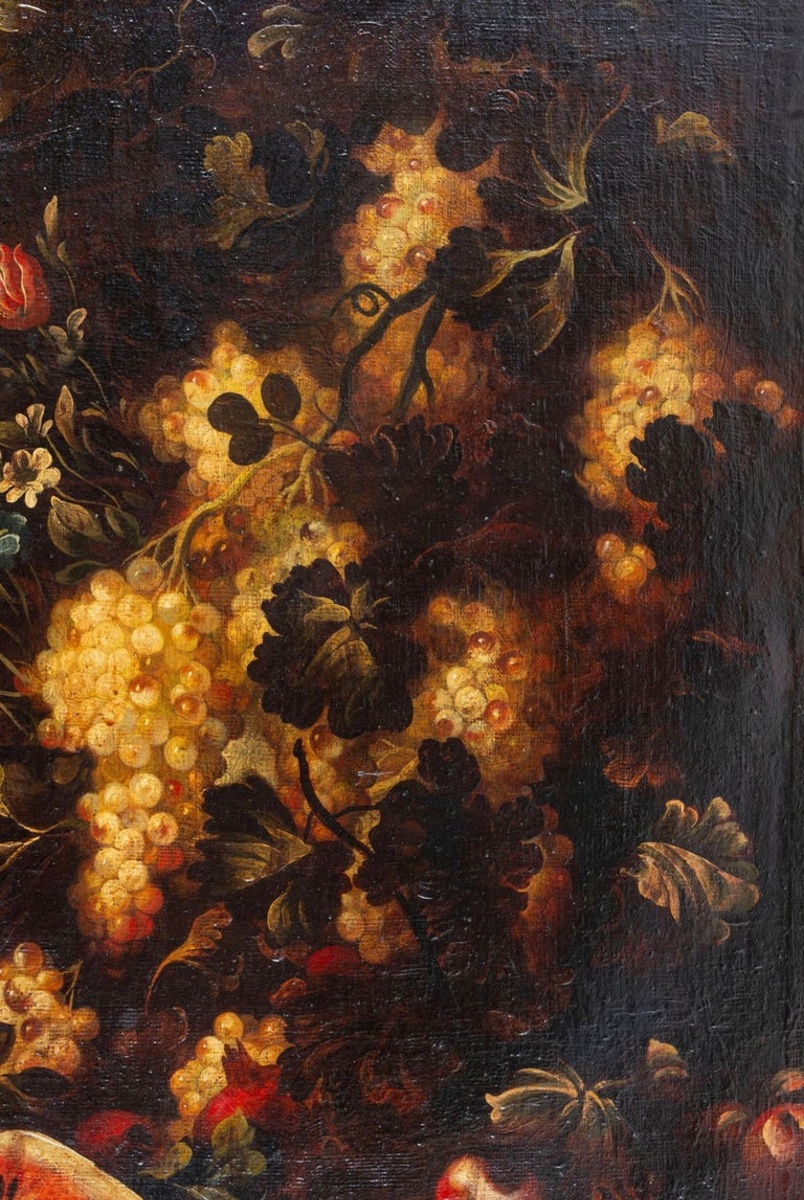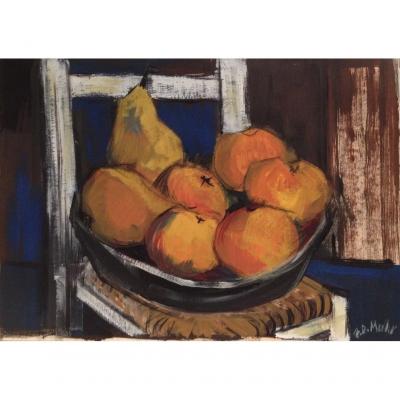oil on canvas
95 x 130 cm unframed
100 x 135 cm framed
Good condition
Abraham Brueghel (baptized November 28, 1631 – circa 1690) was a Flemish painter from the renowned Brueghel family. He emigrated to Italy at a young age, where he played an important role in the development of the Baroque decorative still life style.
Life
Early Life
Abraham was born in Antwerp. He was the son of Jan Brueghel the Younger, the grandson of Jan Brueghel the Elder, and the great-grandson of Pieter Brueghel the Elder. He received much of his artistic training from his father, Jan Brueghel the Younger, a prolific painter and regular collaborator of Rubens. Abraham showed early artistic promise and began to make a name for himself as a teenager. His father sold one of his floral still lifes when he was only 15.
Move to Italy
Woman Picking Fruit
In 1649, at the age of 18, Abraham traveled to Italy to complete a commission for Prince Antonio Ruffo in Sicily. This was the first in a long series of commissions where Abraham demonstrated his artistic talent by drawing floral still lifes. Already in 1649, an inventory from his patron, Prince Antonio Ruffo, listed nine flower paintings by the 18-year-old artist.
Ten years later, in 1659, Brueghel moved to Rome, Italy, where he married an Italian woman less than a year later. In 1670, he was invited to the Accademia di San Luca, a Roman academy dedicated to promoting the work of artists.
Abraham joined the Bentvueghels, an association of mainly Dutch and Flemish artists working in Rome. It was customary among the Bentvueghels to adopt an attractive nickname, the "bend name." He was given the bend name Rijngraaf, meaning "Duke of the Rhine," an ancient German aristocratic title. When Abraham Genoels joined the Bentvueghels in 1670, Abraham Brueghel signed the bend name "Abraham Breugel."
Between 1672 and 1675, Abraham left Rome for Naples, Italy. He played an important role in the development of still life painting in Naples, which, before his arrival, had resisted the Flemish-Roman style of decorative still lifes.
Brueghel remained in Naples until his death. He is thought to have died there around 1690, and in any case no later than 1697.
Work
Still Life of Fruit and Flowers in a Landscape
Abraham Brueghel became known for his still lifes, particularly his floral still lifes. A signed and dated hunting still life is known.[2] Due to the lack of development during the artist's mature period and the scarcity of dated works, it is difficult to establish a chronology of Abraham's artistic development. His brushstrokes were generally slightly more painterly during his Roman period, while his palette lightened and deepened towards the end of his life.
The increasingly luxuriant still lifes of the Flemish painters Frans Snyders, Jan Fyt, and Pieter Boel, who had also worked in Italy, were Abraham Brueghel's main influences. Joannes Hermans, another Flemish painter in Rome, also painted grandiose still lifes combining human figures, flowers, and fruit, anticipating Abraham Brueghel's arrival in Rome in 1653.[6] Brueghel combined the Flemish preference for decorative profusion and anecdote with the radical Italian High Baroque movement of his Italian contemporaries, such as Michele Pace del Campidoglio and Michelangelo Cerquozzi. The fruit of these complementary influences resulted in compositions that appear relaxed while maintaining strong composition and great clarity of detail. Young Woman Picking Figs with Three Children in a Terraced Garden, with Nicola Vaccaro
Abraham Brueghel is particularly known for his still lifes of southern fruits and flowers, usually arranged against a landscape. They are often set off by a precious vase, an ancient monument, or fragments of Roman sculpture. His cartouches are heavier and more decorative.
He often collaborated with other specialist painters to create complex Baroque compositions. He generally painted the landscapes for these collaborations himself, while the stems were created by renowned Italian painters such as Carlo Maratta, Giovanni Battista Gaulli, Nicola Vaccaro, and Giacinto Brandi.[8] A few collaborations between Abraham Brueghel and Guillaume Courtois, a French painter active in Rome, are recorded. An example is the Still Life of Fruit and Flowers with a Figure (sold at Sotheby's on January 29, 2015 in New York, lot 302). The still life was painted by Brueghel, while Courtois painted the figure. The painting is a variation of the painting "Grapes and Pomegranates"













































 Le Magazine de PROANTIC
Le Magazine de PROANTIC TRÉSORS Magazine
TRÉSORS Magazine Rivista Artiquariato
Rivista Artiquariato